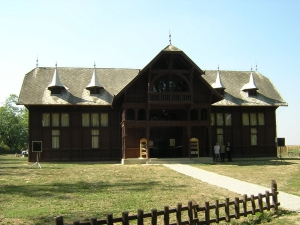|
A town with 36,000 inhabitants, the seat of Tolna county. An abbey, the remains of which can still be seen on the courtyard of the neo-Classical style former County Hall, was founded here by King Béla I. in the 11th century. The early neo-Classical style Roman Catholic church is the greatest single-aisled church of Central-Europe (1805). The memory of the 1738-1740 Black Death is retained by the Baroque statue of the Holy Trinity. The Saint John's and Saint Paul's chapel was built in 1760. Remete (= hermit) chapel, an old place of pilgrimage, is on a border area of the stretch of the town in Séd valley and the slopes of vineyards. The wine culture of Szekszárd dates back to the Roman times; the internationally famous kadarka and the bull's blood of Szekszárd have been grown here for centuries. Lodgings in Szekszárd: Pictures of Szekszárd
|
Szekszárd map nagyítása >>
|
|
|
Hungary - Szekszárd |
|
|
|
||
|
Saturday, 12. July 2025. - 04:53:50 |
||
